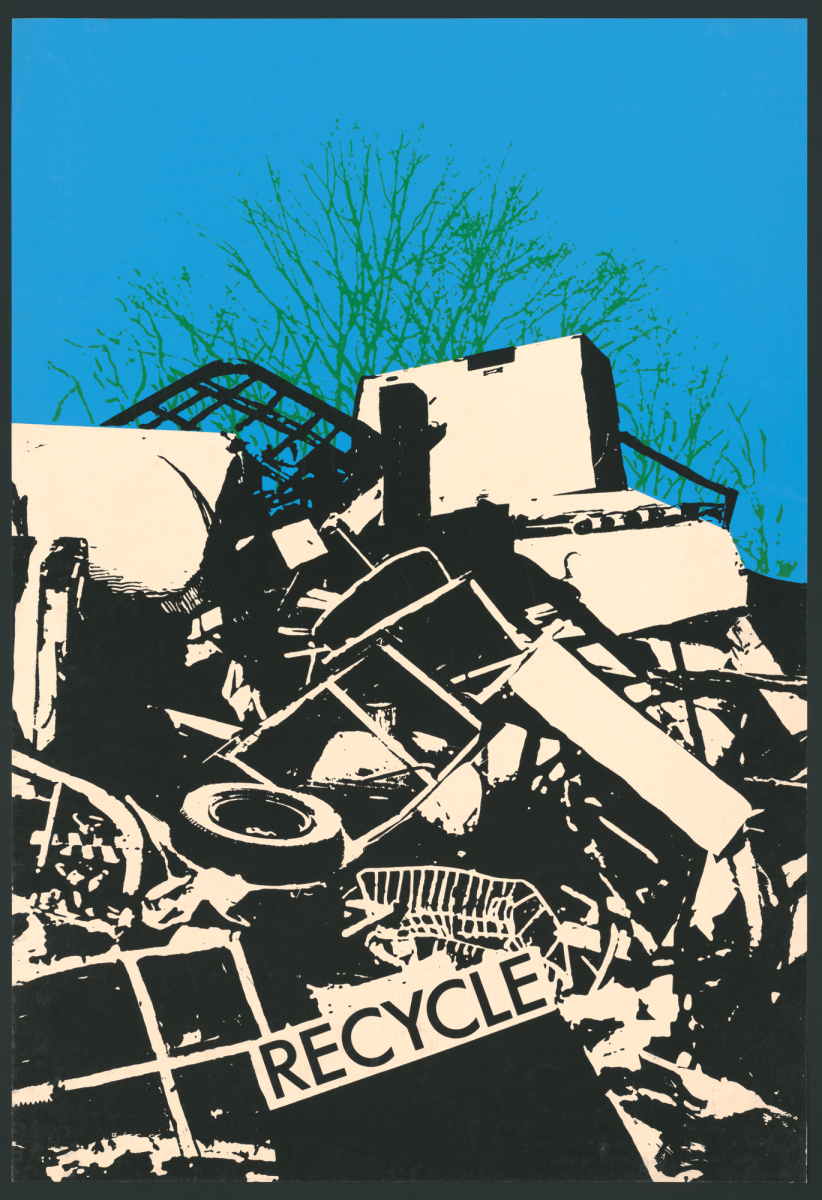Reduce, reuse, recycle: the most basic of sustainability mottos that we’ve probably all heard countless times. Recycling is often viewed as the most basic step we can all take to go green, and in theory it makes sense.
Glass can be recycled indefinitely, as can many metals when granted some intervention to filter out impurities, and even paper and cardboard can be recycled multiple times before their fibers are too short to reuse. Recycling is certainly an effort more Americans could participate in, with the Environmental Protection Agency (EPA) reporting that out of all waste produced in 2018, only about 32% was recycled or composted. Around a third of all waste– not a fantastic number, but still a significant one.
I flinch at the idea that environmental salvation lies in the hands of the average consumer. This isn’t to say that the things we do in our everyday lives don’t have an impact, but rather that the amount of waste produced by corporations stretches far beyond what most of us could create in our lifetime.
According to the EPA’s Industrial Waste Guide, manufacturing companies produce about 1,800 pounds of waste per person they employ. A study reported on by Renewable Matter, a European science journal focused on sustainability issues, found that around half of the world’s plastic pollution originated from just 56 companies.
So, is it hopeless? Do our contributions matter, or should we all just say, “screw it” and chuck the pop cans, pasta sauce jars, and pizza boxes in the trash from now on? Well, not exactly. There are still many things we can individually do to minimize wastefulness.
As of 2018, the EPA found that around 25 percent of waste in landfills was food waste– a relatively simple fix for most people. In conjunction with reducing food waste by buying less food, we can also reduce our trashing of single-use plastics that are often used in food packaging.
One of the most impactful steps we can make, which is particularly difficult in a world where so many products are being thrust at us daily (thanks, social media), is simply buying less. When you get that trendy pair of shoes or luxury lipstick everyone is raving about, do you think about the plastic it’s surely wrapped in, or the emissions taken to ship it to you?
Focusing on recycling may seem small, but at the end of the day it’s a consistent step that most people can take to feel sustainable. The reality is, though, that recycling is a symptom-level remedy to the disease of overconsumption and overproduction. If you’re serious about sustainability, think twice the next time you find yourself purchasing things you might not need. Find ways to buy local, buy less, and use more. That tricky starting word in the age old slogan, “reduce,” is first for a reason.









